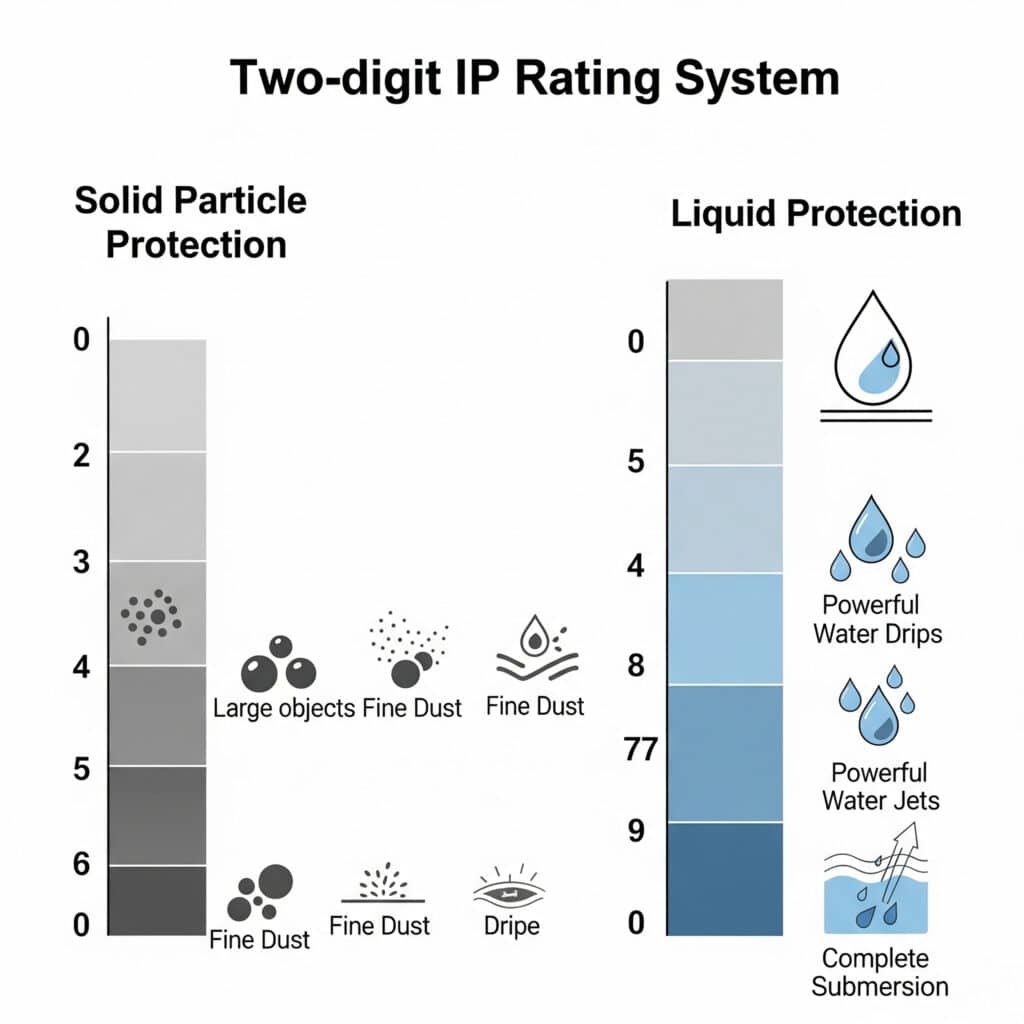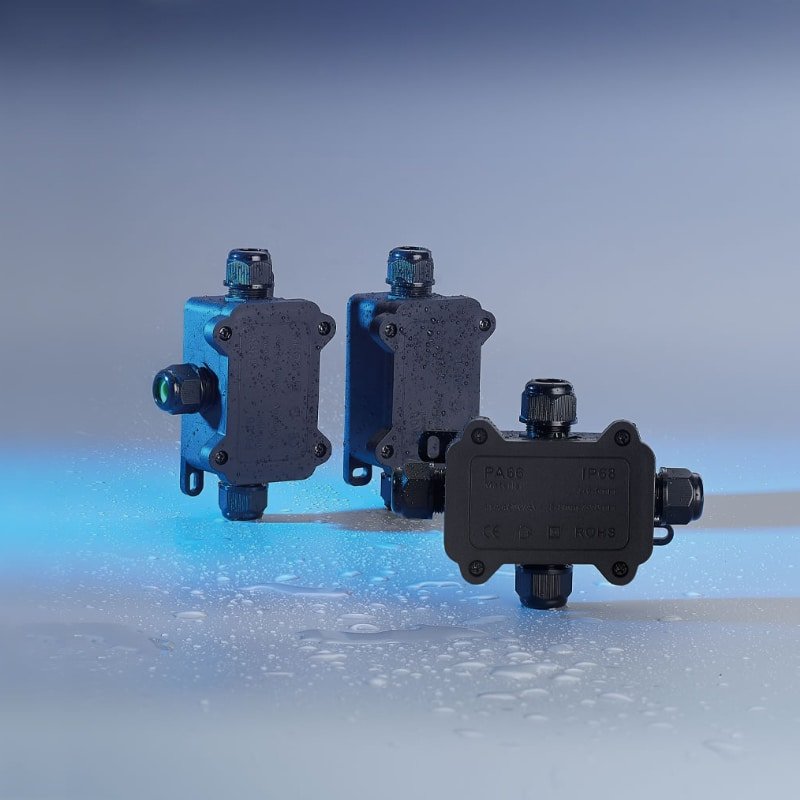Introduction
Choosing the wrong junction box rating can cost you thousands in equipment damage and downtime. I’ve seen too many projects fail because engineers picked NEMA 4 when they needed IP66, or vice versa. The confusion between these two rating systems has plagued our industry for decades, leading to costly mistakes and safety hazards.
The key difference is simple: NEMA ratings are North American standards focusing on specific hazards, while IP ratings are international standards measuring dust and water protection levels. Understanding which system applies to your project environment is crucial for equipment longevity and safety compliance.
Last month, I helped David, a procurement manager from a Texas oil refinery, avoid a $50,000 mistake. He was about to order NEMA 3R junction boxes for an outdoor installation, not realizing his project required IP65-rated enclosures for international compliance. This guide will help you make the right choice every time.
Table of Contents
- What Are NEMA and IP Rating Systems?
- How Do NEMA Ratings Work in Practice?
- What Do IP Ratings Actually Measure?
- Which Rating System Should You Choose?
- FAQ
What Are NEMA and IP Rating Systems?
NEMA (National Electrical Manufacturers Association)1 and IP (Ingress Protection) are two distinct standards that define how well electrical enclosures protect against environmental hazards. While both serve similar purposes, they use completely different testing methods and criteria.

NEMA Rating System Overview
NEMA ratings originated in North America and focus on specific environmental conditions. These ratings consider factors like:
- Dust and dirt protection
- Water resistance levels
- Corrosion resistance2
- Ice formation protection
- Oil and coolant resistance
The most common NEMA ratings you’ll encounter include:
- NEMA 1: Indoor use, basic protection
- NEMA 3R: Outdoor use, rain protection
- NEMA 4: Outdoor use, hose-directed water protection
- NEMA 4X: Corrosion-resistant version of NEMA 4
- NEMA 12: Industrial use, dust and dripping liquid protection
IP Rating System Fundamentals
IP ratings follow the IEC 60529 international standard3, using a two-digit system:
- First digit (0-6): Solid particle protection
- Second digit (0-9): Liquid ingress protection
For example, IP65 means complete dust protection (6) and protection against water jets (5). This system is more precise but less comprehensive than NEMA ratings.
How Do NEMA Ratings Work in Practice?
NEMA ratings provide comprehensive environmental protection specifications that go beyond just dust and water resistance. They’re designed for real-world applications where multiple hazards exist simultaneously.
Real-World NEMA Applications
I recently worked with Hassan, who owns a chemical processing plant in Dubai. He needed junction boxes for a harsh industrial environment with corrosive chemicals, high temperatures, and occasional washdowns. We selected NEMA 4X enclosures because they provide:
- Complete protection against windblown dust
- Protection against hose-directed water from any angle
- Corrosion resistance for chemical environments
- Ice formation resistance (important for refrigerated areas)
NEMA Rating Comparison Table
| NEMA Rating | Environment | Key Protection Features |
|---|---|---|
| NEMA 1 | Indoor, dry | Basic dust protection |
| NEMA 3R | Outdoor | Rain, sleet, snow protection |
| NEMA 4 | Outdoor/Indoor | Hose-directed water, windblown dust |
| NEMA 4X | Corrosive environments | NEMA 4 + corrosion resistance |
| NEMA 12 | Industrial indoor | Dust, dripping liquids, light splashing |
Testing Standards and Certification
NEMA ratings undergo rigorous testing that simulates real-world conditions. Unlike IP ratings, NEMA tests consider:
- Temperature cycling effects4
- UV radiation exposure
- Vibration resistance
- Gasket aging5 under various conditions
This comprehensive approach makes NEMA ratings ideal for long-term installations in challenging North American environments.
What Do IP Ratings Actually Measure?
IP ratings provide precise, measurable protection levels against specific ingress types, making them perfect for international projects requiring exact specifications. The two-digit system offers clear, quantifiable protection levels.

Understanding IP Rating Digits
First Digit – Solid Particle Protection:
- 0: No protection
- 1: Objects >50mm (hand-sized)
- 2: Objects >12.5mm (finger-sized)
- 3: Objects >2.5mm (tool-sized)
- 4: Objects >1mm (wire-sized)
- 5: Dust protected (limited ingress)
- 6: Dust tight (no ingress)
Second Digit – Liquid Protection:
- 0: No protection
- 1: Vertical dripping water
- 2: Dripping water (15° tilt)
- 3: Spraying water (60° angle)
- 4: Splashing water (all directions)
- 5: Water jets (6.3mm nozzle)
- 6: Powerful water jets (12.5mm nozzle)
- 7: Temporary immersion (1m depth)
- 8: Continuous immersion
- 9: High-pressure, high-temperature jets
Common IP Ratings for Junction Boxes
The most popular IP ratings for junction boxes include:
- IP54: Dust protected, splash resistant
- IP65: Dust tight, jet resistant
- IP66: Dust tight, powerful jet resistant
- IP67: Dust tight, temporary immersion
- IP68: Dust tight, continuous immersion
Which Rating System Should You Choose?
Choose NEMA ratings for North American projects requiring comprehensive environmental protection, and IP ratings for international projects or when precise ingress specifications are needed. Your decision should consider project location, regulatory requirements, and specific environmental hazards.
Decision Matrix for Rating Selection
Choose NEMA When:
- Installing in North America (US, Canada, Mexico)
- Dealing with multiple environmental hazards
- Requiring corrosion resistance specifications
- Working with local electrical codes
- Need comprehensive temperature cycling protection
Choose IP When:
- Working on international projects
- Requiring precise ingress specifications
- Following IEC standards
- Exporting equipment globally
- Need specific dust/water protection levels
Geographic and Regulatory Considerations
Different regions prefer different standards:
- North America: NEMA ratings dominate
- Europe: IP ratings are standard
- Asia-Pacific: Mixed usage, trending toward IP
- Middle East: Often requires both certifications
- Industrial sectors: May specify both ratings
Cost and Availability Factors
NEMA-rated enclosures typically cost 10-15% more than equivalent IP-rated units due to:
- More comprehensive testing requirements
- Additional protection features
- Lower global production volumes
- Specialized materials and gaskets
However, the long-term reliability often justifies the higher initial investment, especially in harsh environments.
Conclusion
Selecting between NEMA and IP ratings doesn’t have to be complicated. Focus on your project’s geographic location, regulatory requirements, and specific environmental challenges. NEMA ratings excel in comprehensive North American applications, while IP ratings provide precise international specifications. When in doubt, consult with experienced suppliers who understand both systems and can recommend the optimal solution for your specific application. Remember, the right junction box rating protects your investment and ensures years of reliable operation.
FAQ
Q: Can I use IP-rated junction boxes in North America instead of NEMA-rated ones?
A: Yes, IP-rated enclosures can be used in North America if they meet local electrical codes and provide adequate protection. However, ensure the IP rating matches or exceeds the environmental requirements that a NEMA rating would provide.
Q: What’s the IP equivalent of NEMA 4X junction boxes?
A: NEMA 4X roughly corresponds to IP66 for dust and water protection, but NEMA 4X includes additional corrosion resistance and temperature cycling protection that IP66 doesn’t specify. Consider both ratings when making comparisons.
Q: Are higher IP ratings always better for junction boxes?
A: Not necessarily. Higher IP ratings often mean higher costs and may include unnecessary protection features. Choose the rating that matches your actual environmental requirements rather than over-specifying.
Q: How do I verify if a junction box actually meets its stated NEMA or IP rating?
A: Look for third-party certification marks from recognized testing laboratories like UL, CSA, or TUV. Reputable manufacturers provide detailed test certificates and compliance documentation.
Q: Can junction boxes have both NEMA and IP ratings?
A: Yes, many manufacturers test their enclosures to both standards and provide dual ratings. This is common for products sold in both North American and international markets.
-
Visit the official NEMA website to learn more about their standards and activities. ↩
-
Explore the engineering principles of corrosion resistance and how materials are rated for harsh environments. ↩
-
Access the official International Electrotechnical Commission (IEC) page for the 60529 standard on Ingress Protection. ↩
-
Understand how temperature cycling tests simulate long-term environmental stress on materials and components. ↩
-
Learn about the factors that contribute to gasket aging and how it impacts long-term sealing performance. ↩



